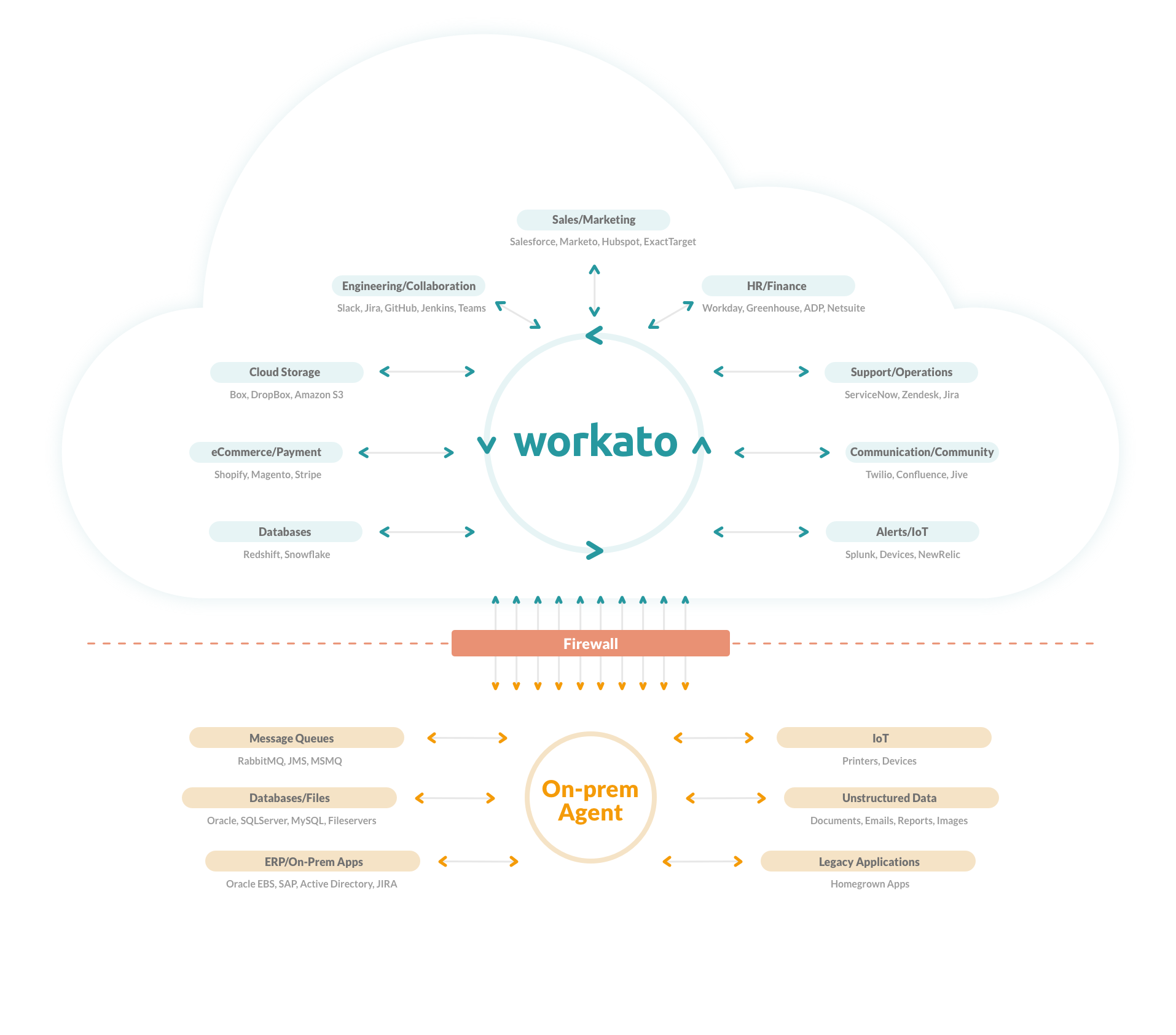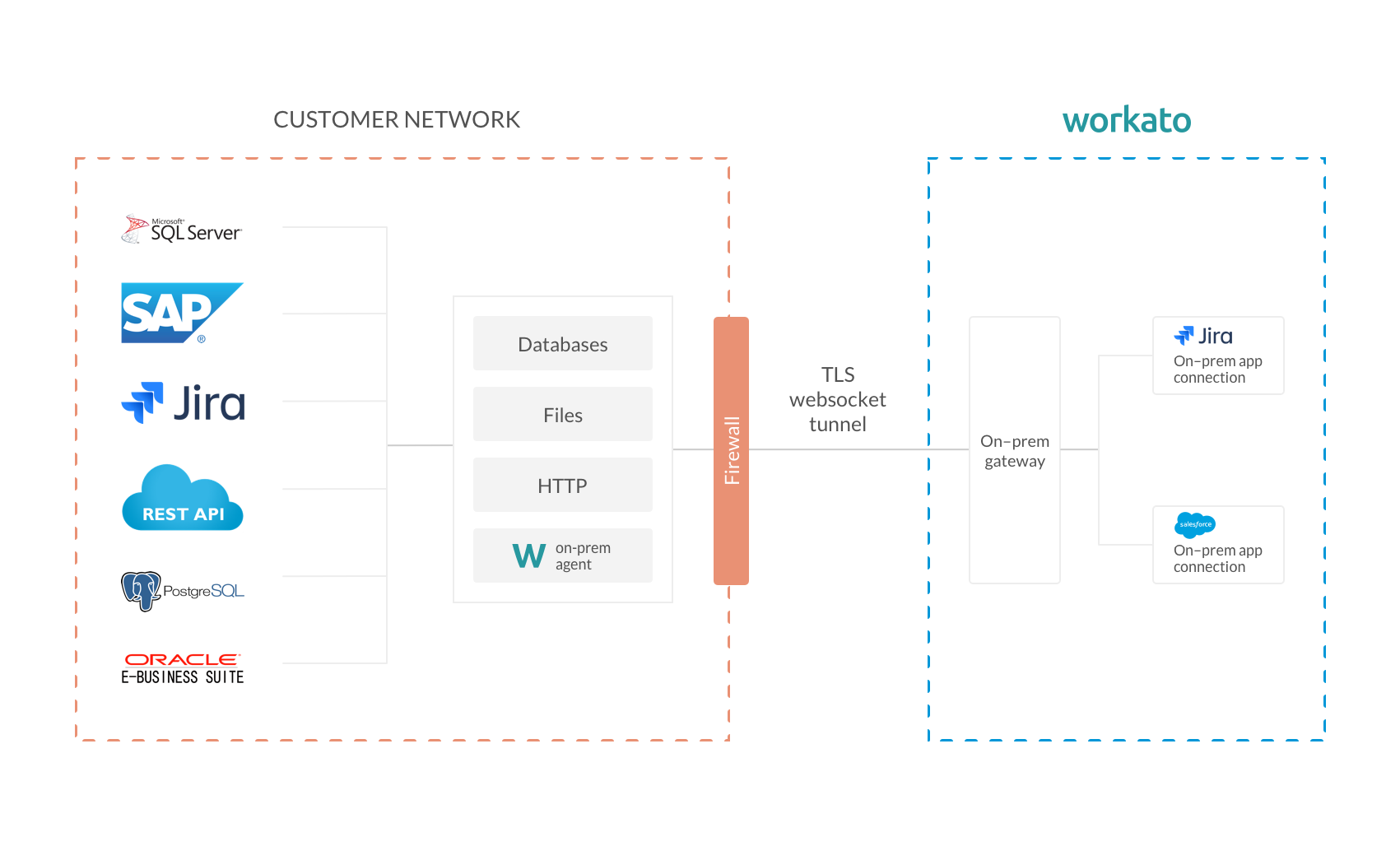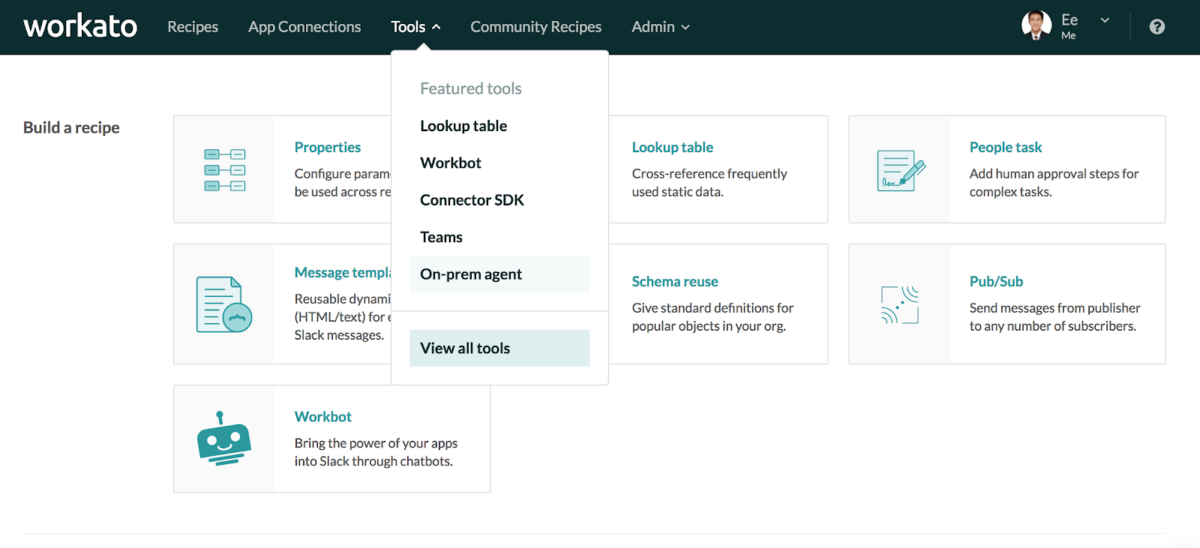In the last several years, the cloud revolution has transformed the way that businesses operate and the tools that they use. From CRMs to data storage, it seems that today almost everything is cloud-based.
Broadly speaking, businesses commonly use several service models for cloud computing:
-
- Infrastructure as a Service (IaaS), which is used for managing storage, virtualization, CDN, networking, and computing.
- Platform as a Service (PaaS), which is used for managing application platforms, databases, integrations, and development.
- Software as a Service (SaaS), which is used for managing business apps for CRM, security, HRM/HCM, finance/accounting, and marketing.
Though most enterprises are increasingly migrating their operations and applications into the cloud, certain cloud deployment models and legacy applications sit behind a corporate firewall. These can exist either in their own data centers or in a private cloud, but in either case, they exist behind a firewall. This means that businesses—especially larger companies—frequently have a mix of cloud and “ground” (also known as on-premise) programs including ERPs, legacy systems (such as proprietary apps), databases, and file directories.
When it comes to connecting their apps, then, businesses often need to address three different integration scenarios:
-
-
- Connecting cloud apps to other cloud apps
- Connecting cloud apps to on-prem systems
- Connecting on-prem systems to other on-prem systems
-
Given this diversity of integration scenarios, it’s crucial that your iPaaS platform be able to handle all of them—and do so securely, while not placing too big a burden on IT.
Related: Why you should integrate your SaaS apps
At Workato, we’ve worked hard to create a platform that can address any integration and automation use case, regardless of which apps you’re connecting. We provide out-of-the-box connectivity for 300+ cloud and on-premise applications. The on-premise applications can be hosted in your data center or in a private cloud that is protected by a firewall.
You can securely connect to any on-prem app using Workato’s on-prem agent (OPA). Businesses choose Workato for on-premise integration for many reasons, including:
-
-
- Pre-built connectors: We offer many pre-built connectors for common on-prem apps so you can create your integrations quickly, instead of starting from scratch. You can integrate message queues (like JMS and Kafka), on-prem applications (such as SAP or Oracle EBS), databases (like Oracle and SQL Server), file servers, unstructured data (such as email or documents), and Identity and Access Management apps (e.g. Active Directory)—all using pre-built connectors!
- On-prem Agent: The Workato on-premise agent provides a secure way for Workato to selectively access customer-authorized on-premise apps, databases, and folders without having to open ports in the corporate firewall.
- On-prem SDK/extension: In addition to the pre-built connectors available, you can extend connectivity to legacy applications, spreadsheets, and IoT devices using Workato’s on-prem SDK. With custom connectors, you can connect to any endpoint in your enterprise.
-
Related: A guide to implementing cloud integration
How Does On-Premise Integration Work with Workato?
This image depicts a conceptual model of Workato’s on-premises agent and how it interacts with databases and applications behind the firewall.
Using Workato for on-premise connectivity has two core components: tunneling and on-prem application access. The on-premise agent runs within the customer’s data center, behind the firewall, and establishes a TLS websocket tunnel to connect out to Workato. For Workato accounts with on-premises access, users can view the on-premises option in the Tools menu.
Related: What are application connectors? Here’s what you need to know
What About Security and Operations?
We’ve also worked to address some common concerns that businesses have about on-prem integration.
The first concern is security. Businesses want to know that their information is always safe and that they’re not exposing themselves to unnecessary risks. With Workato, only authorized users are able to access, configure, and operate the on-prem agent.
Another big concern about on-prem integration is how to operationalize it efficiently. As an intelligent automation and integration platform, Workato gives system administrators the ability to build scripts to automate OPA start-up, monitoring, and shut-down. (On Windows, this feature runs as a Windows service, not a script.) Authorized users can also view OPA’s status at any time. Additionally, Workato gives you the ability to whitelist IP addresses.
Creating End-to-End Workflows with On-Premise Integration
From end to end perspective, there are often a number of steps that have to happen with on-prem systems/apps/databases.
This is where Workato is distinct from other tools that only allow you to implement a point-to-point integration: we enable you to pull data from all your apps into comprehensive workflows and process automations. Our platform is designed to help you create end-to-end, multi-step, multi-application workflows that make sense for your business—rather than settling for what is feasible.
Harmonizing Your Cloud-to-Ground, Ground-to-Cloud, and Ground-to-Ground Workflows
With Workato, you can easily build all types of workflows that require moving data between cloud and ground/on-prem apps.
For example, the world’s #1 messaging platform uses Workato recipes to move product usage data stored on Amazon S3 as CSV files into an enterprise data warehouse running on SQL Server database which sits behind a corporate firewall.
They can then run advanced analytics on the data to create customer segments and scores. The customer segments and score data are then moved from the Enterprise Data Warehouse, running on an on-prem instance of SQLServer, into Salesforce.
Related: How to perform cloud-to-cloud integration effectively
See It In Action: How the #1 Multinational Energy Transportation Company Democratized Its Workday Integrations
For a Global 500 energy infrastructure company with over 17,000 employees, some of the most critical workflows happen in the human resources (HR) department. These workflows include things like payroll, employee onboarding, and resource planning.
When faced with an influx of 6,000 new employees due to a merger, streamlining HR operations between the two organizations became a top priority. To successfully combine both organizations’ information and systems, they would need to do a lot of integration work, including extending a recently-deployed Workday solution.
Previously, the company had used several local integration brokers to handle these types of projects. But because the merger would require integration on a larger scale, they set out to find a more robust solution that could still accommodate both their on-premise systems and their rapid adoption of SaaS products, as well as a general shift to the cloud across the company. They also needed a tool that didn’t require months or years of training to use; they needed a solution that knowledgeable employees could pick up and use with minimal training.
After evaluating several vendors, the company narrowed the field to two potential tools. Workato ultimately prevailed due to its powerful platform and user-friendly interface. Primarily, the company plans to use Workato to integrate Workday with several instances of SAP. They will also use Workato to streamline their provisioning workflows and feed information into several systems, which include Salesplane for identity and access management (IAM), Photos, and ServiceNow—which will become their ERP.
“I asked Gartner and Forrester: what tool will democratize integration so that we’re not relying on a small group of people to build our integrations? Because when only a few people can build integrations, projects are placed in a queue. Getting them built can be a long and painful process. We wanted to find a product on the market that would allow your average IT developer and business analyst to actually do the integrations themselves with shorter time-to-value,” an Enterprise Architect at the company explains.
“Reducing the time between when we identify an integration need to the time we have it fulfilled is the big prize for me with Workato. We wanted an easy to use tool that an ad-hoc integrator can use to bring a requirement from concept to implementation in just a matter of days, with some guardrails to maintain quality,” he says.
To learn more about how Workato empowers on-premise integration, check out our Product Hub >



